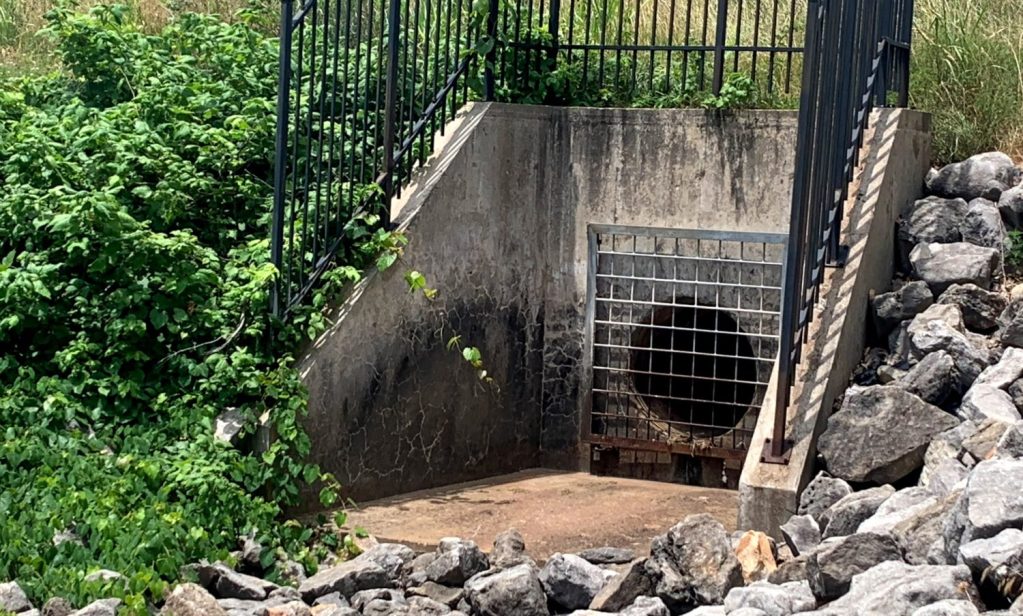More than $17 million will send more water to Springfield from Stockton Lake. The challenge will be for engineers and utility executives to stretch the dollars needed to bolster Springfield’s water supply.
City Utilities Chief Natural Gas and Water Operations Officer Steve Stodden gave a short overview of two federally funded projects on Feb. 23, when the Springfield Utility Board met in a regular session. Through the Consolidated Appropriations Act of 2022, the U.S. Environmental Protection Agency will oversee a $14 million congressionally designated funding grant for construction of a booster station the Stockton Pipeline.
When it’s finished, the booster will put Springfield’s drawing capacity at the cap of its agreement with the U.S. Army Corps of Engineers to draw water out of Stockton Lake.
“This allows us to take that full allocation from Stockton,” Stodden said.
The challenge, Stodden said, is to shave down the overall price tag for the pump station.
“That project was looking like it’s about an $18 million project, so we got $14 million worth of funding,” Stodden said. “We’re kind of going back now and seeing what we can do to see if we can get closer to that $14 million number.”
Getting closer to $14 million means City Utilities will have less funding to try to drum up on its own. The Stockton Pipeline booster is not part of the utility’s five-year comprehensive plan and, therefore, is not part of any immediate budgets.
“In order to construct it, we’re going to figure out our piece of that and how to fund that,” Stodden said.
“There is also no time deadline for this money, so we’re hoping that maybe if we push it out a couple of years, some of the supply chain issues will clear up, maybe some of the prices will drop a little bit, and we’ll get a little bit closer to that money,” Stodden said.
Built in 1996, the Stockton Pipeline is 30.1 miles long and 36 inches in diameter. It takes water from Stockton Lake to Fellows Lake, and that water is then pumped to the Blackman Treatment Plant in east Springfield. Fellows Lake is Springfield’s primary source of drinking water, according to a source water protection plan filed with the Watershed Committee of the Ozarks. The pipeline can currently deliver 20 million gallons per day to Fellows Lake, McDaniel Lake and a pump station at Fellows Lake.
“That’s a fairly inefficient pumping process, that’s with three pumps running,” Stodden said.
Stodden explained that a larger pipeline should increase Springfield’s drought resiliency. With the current configuration, City Utilities sometimes amps up the amount of water pumped to Fellows Lake in anticipation of a drought. However, if the onset of a drought is rapid or unforeseen, engineers are left to play catch-up to draw enough water to meet Springfield’s demands.
“It’s going to be huge for drought resiliency,” Stodden said.
The booster station means water can be pumped from Stockton with more efficiency and speed.
A wider line from Fellows Lake

City Utilities will also get a $3.5 million grant to build a 48-inch water line from Fellows Lake to the Blackman Water Treatment Plant in east Springfield. The water will travel more than 12 miles through the pipeline.
Stodden said work on the booster station and the water line will be pushed out a year or two, meaning it probably won’t be let out for bids until sometime in 2024.
In dealing with the EPA, Stodden expects another six to eight months of processing time before City Utilities sees any of the money.
“It gets paid out as you go, and there’s also a whole application process that we have to go through,” Stodden said. “It’s federal government, so we’re having to do a bunch of environmental regulatory compliance. We’re having to fill out a bunch of applications for it, even though it’s already been designated to us.”
City Utilities executives are also hoping for the cost of materials to deflate slightly as design, environmental and processing work continues.
“Normally, if you got the money, you spend it because inflation is going to make things go higher,” Stodden said. “I think right now we’ve already seen that inflation, so hopefully, if the supply chain fixes itself, maybe the prices will drop a little bit.”
Inside the drinking water numbers

City Utilities pumps an average of 1.43 billion gallons of water through the Stockton Pipeline each year, which equates to about 2 inches of lake level on Stockton.
An added booster pump would allow City Utilities to pump water from Stockton Lake at a rate up to 30 million gallons per day, which is the maximum volume allowed through Springfield’s agreement with the U.S. Army Corps of Engineers.
In 2013, Springfield elevated its drawing capacity from Stockton Lake from 15 million gallons per day to 20 million gallons per day after a severe drought in 2012. A proposal for a third allocation is under review by the Army Corps of Engineers as part of Springfield’s membership in the Tri-State Water Coalition.
City Utilities leaders are not overly concerned with water supply issues causing shortages, but do encourage Springfield residents and businesses to practice water conservation whenever possible.
Once water from Stockton Lake reaches Fellows Lake, it can be pumped to the Blackman treatment plant using four pumps, each rated at 15 million gallons per day. Water may also follow the Little Sac River to McDaniel Lake, where it can be pumped to the Fulbright Treatment Plant just north of Springfield.
Springfield also gets some of its drinking water from groundwater, with wells at Fulbright and at a well off of South Kansas Avenue.

